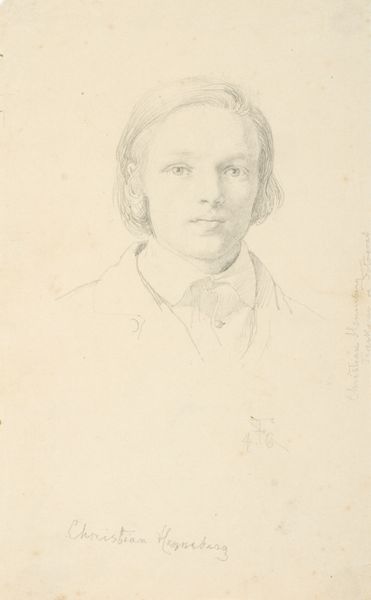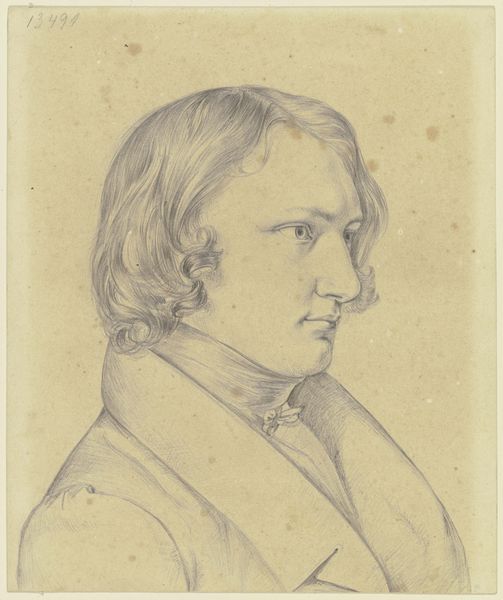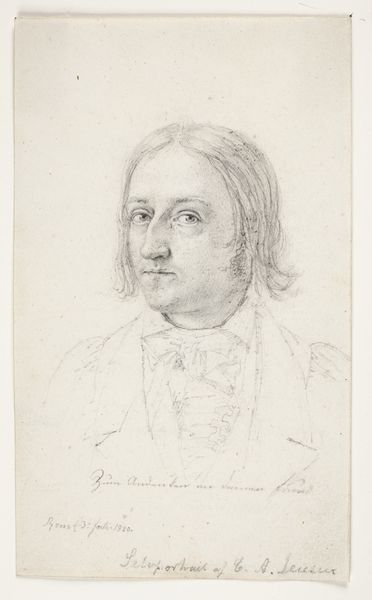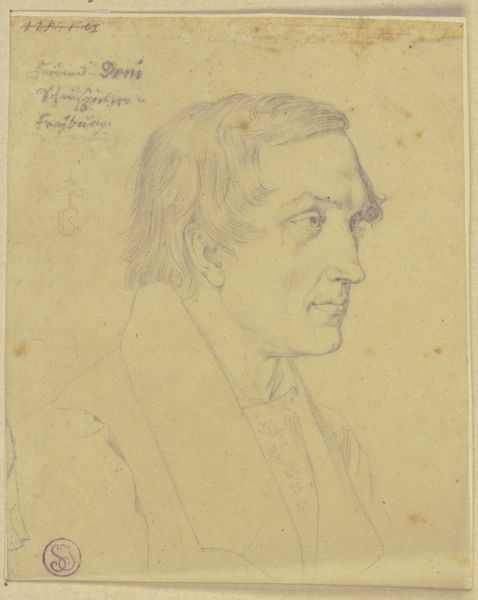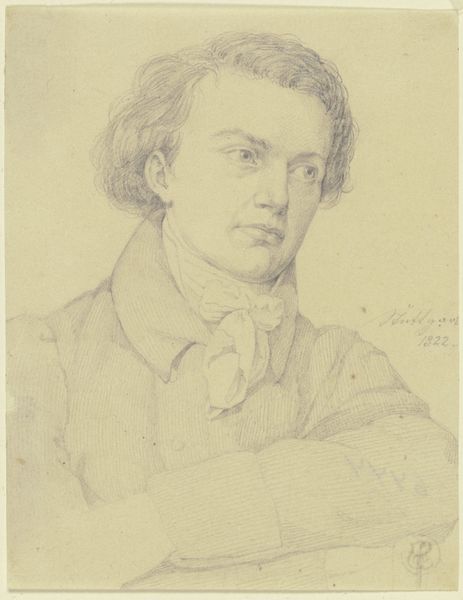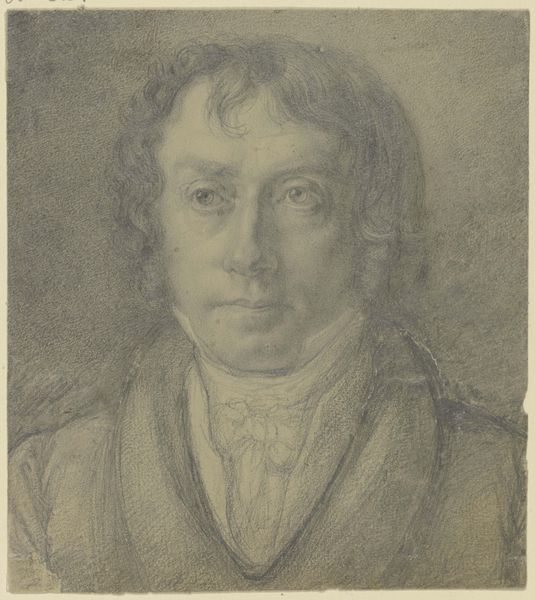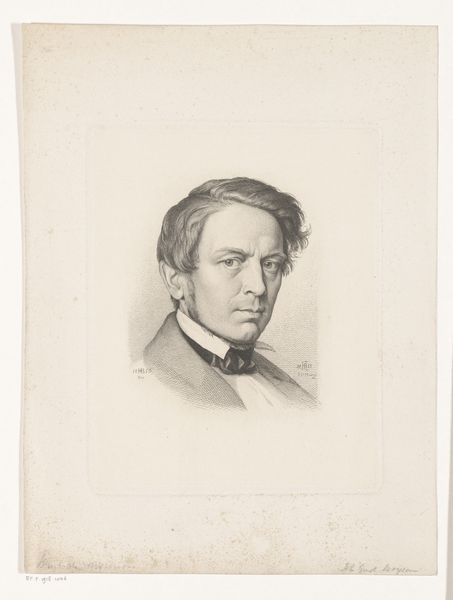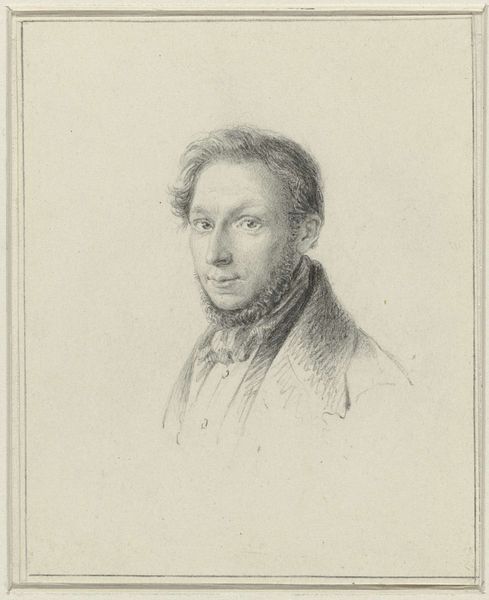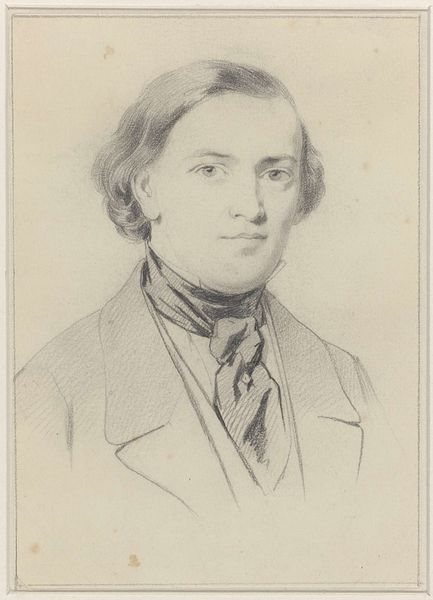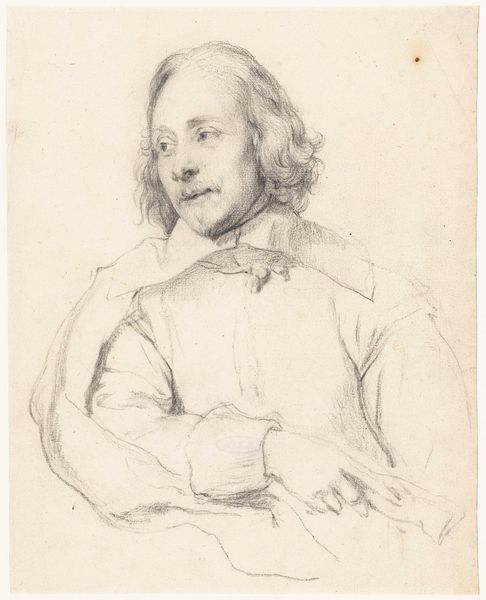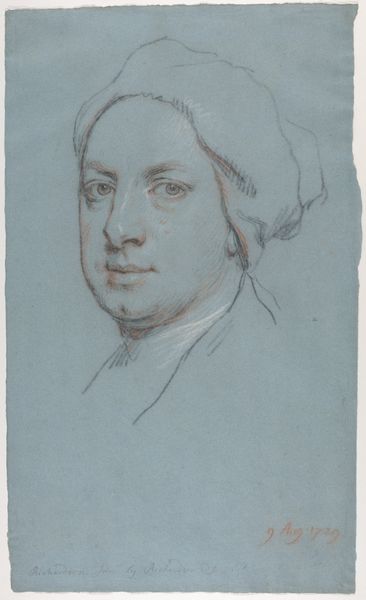
drawing, paper, pencil
#
portrait
#
drawing
#
paper
#
romanticism
#
pencil
Copyright: Public Domain
Nikolaus Hoff created this portrait of the Stuttgart banker Tiedemann in 1820 using graphite. During the early 19th century, in the German Confederation, the rising merchant class sought recognition and status through portraiture. Hoff, trained in the classical tradition, employs a naturalistic style, focusing on the banker's refined features and composed demeanor. This reflects the sitter’s self-perception and aspirations within Stuttgart’s evolving social hierarchy. The drawing serves as a visual record and social commentary. The details of the banker's attire, though understated, signal his economic standing. Hoff’s artistic choices reveal the dynamics between the artist, the patron, and the broader cultural values of the time. To fully understand this work, one would need to delve into Stuttgart’s economic history and the role of its banking institutions. Art becomes meaningful through the circumstances of its making and the cultural values it reflects.
Comments
No comments
Be the first to comment and join the conversation on the ultimate creative platform.
